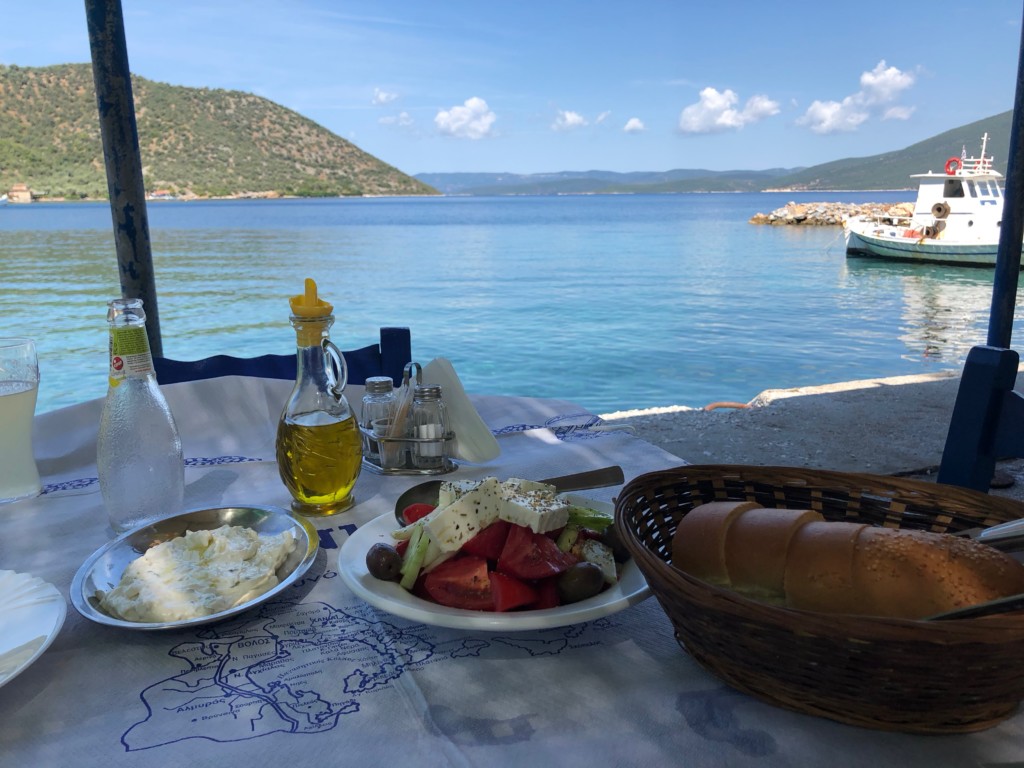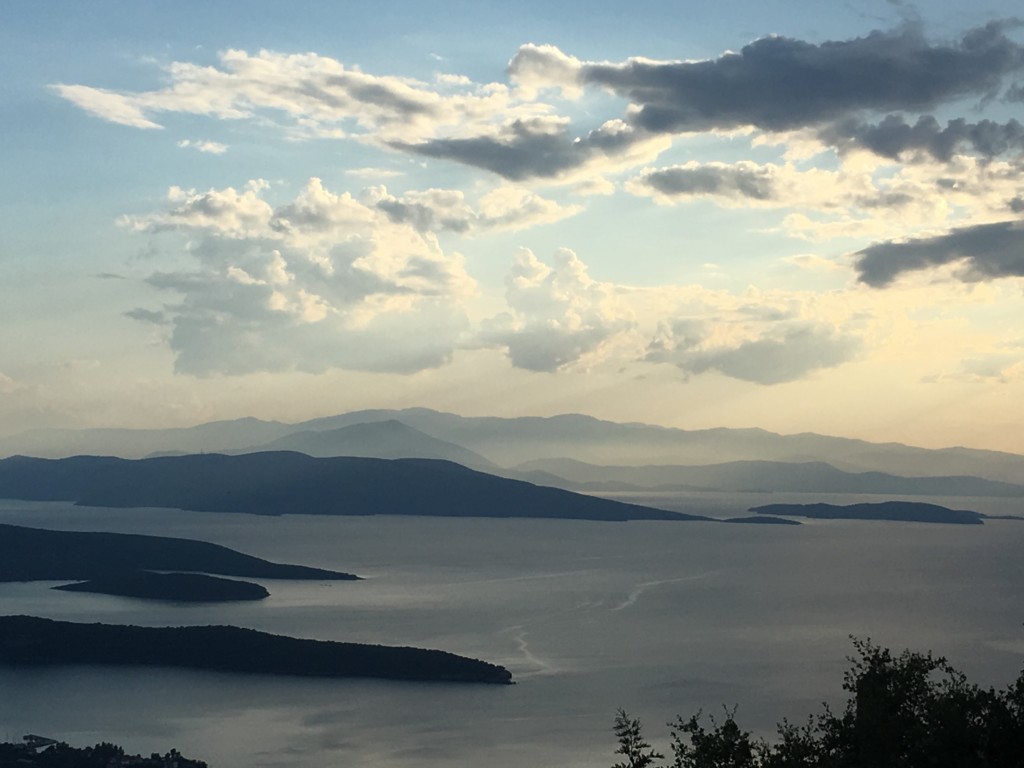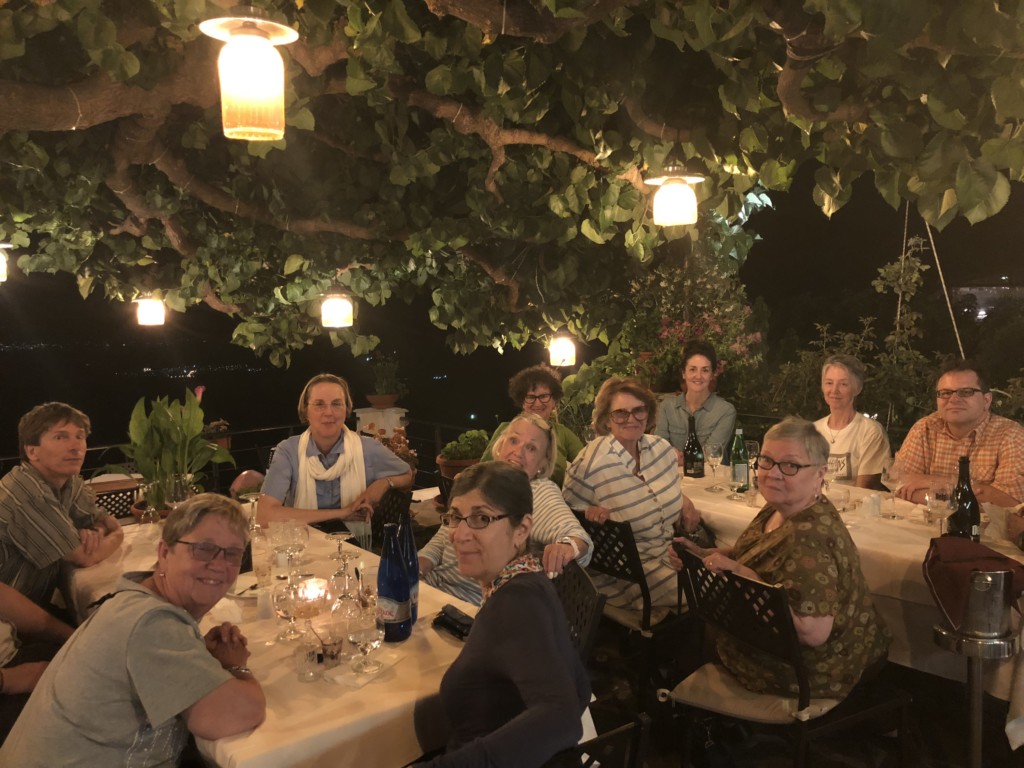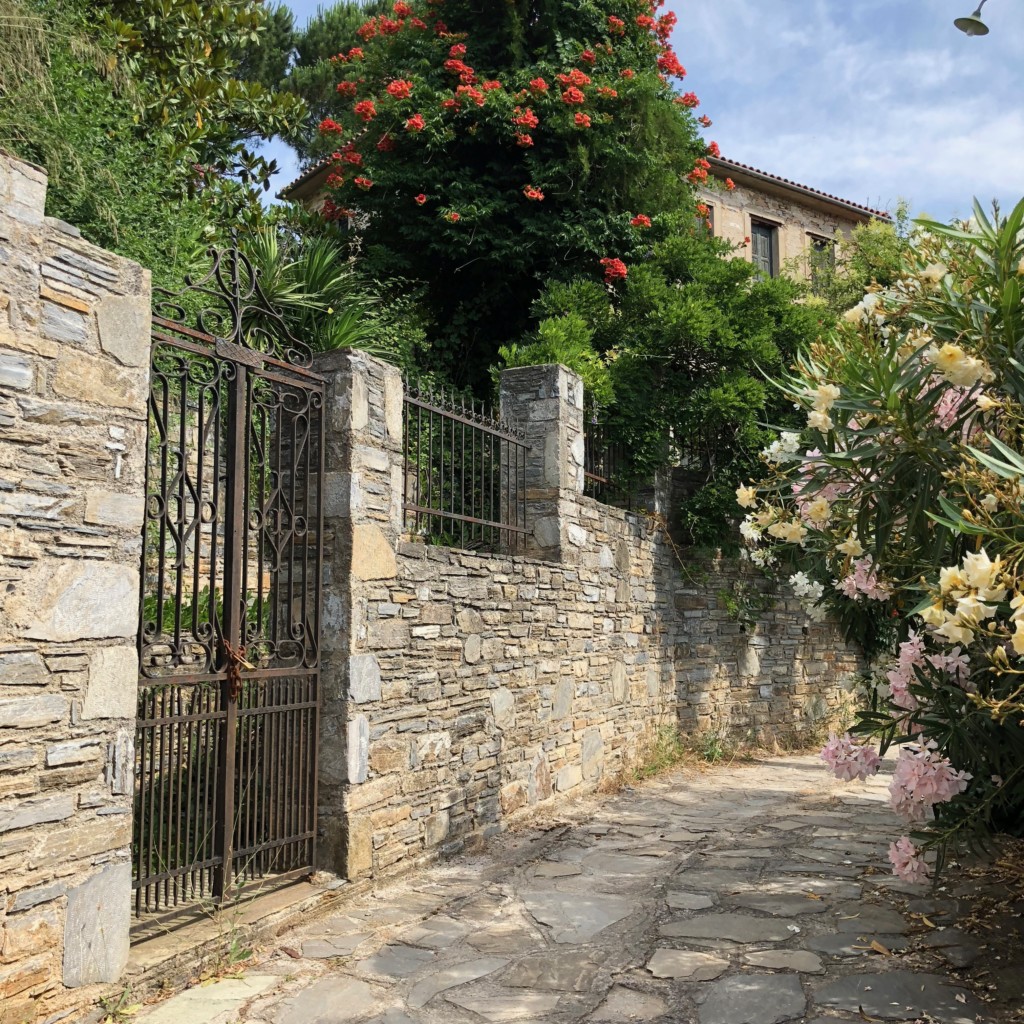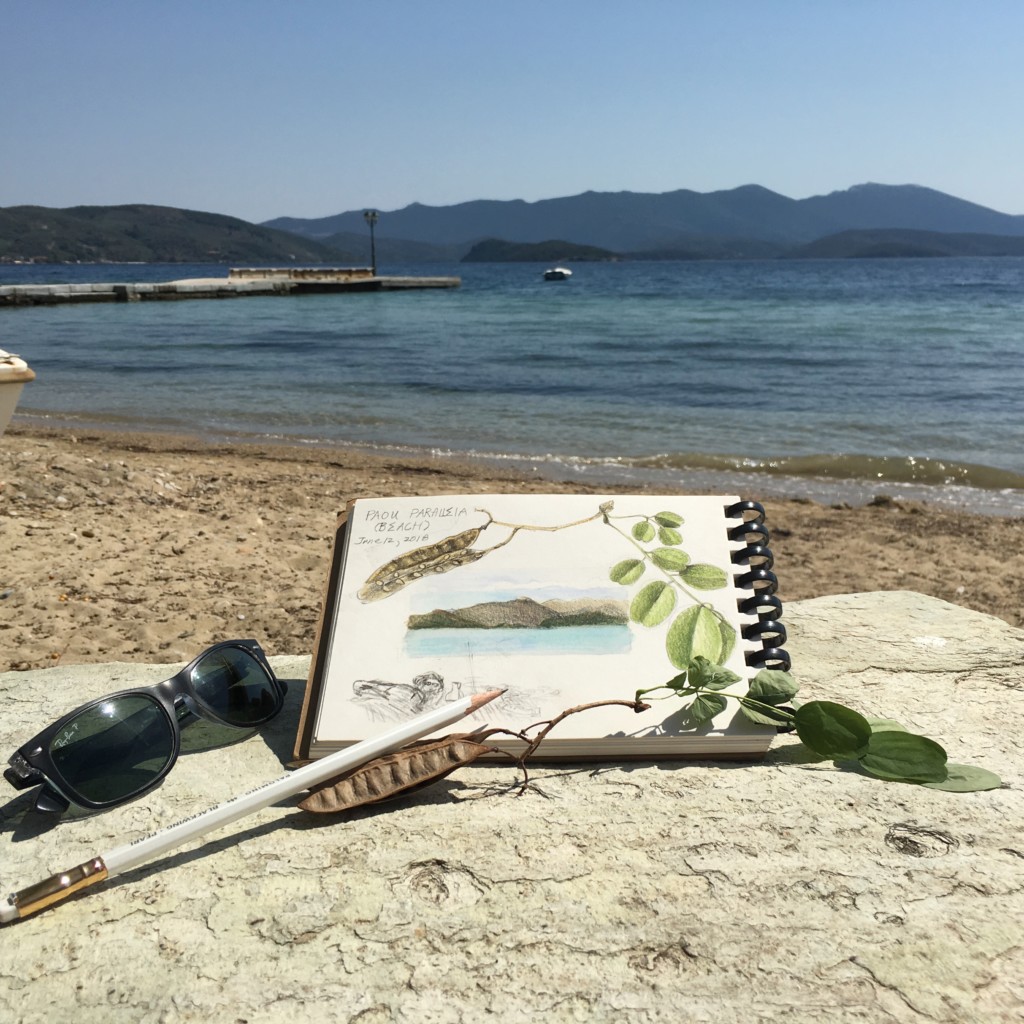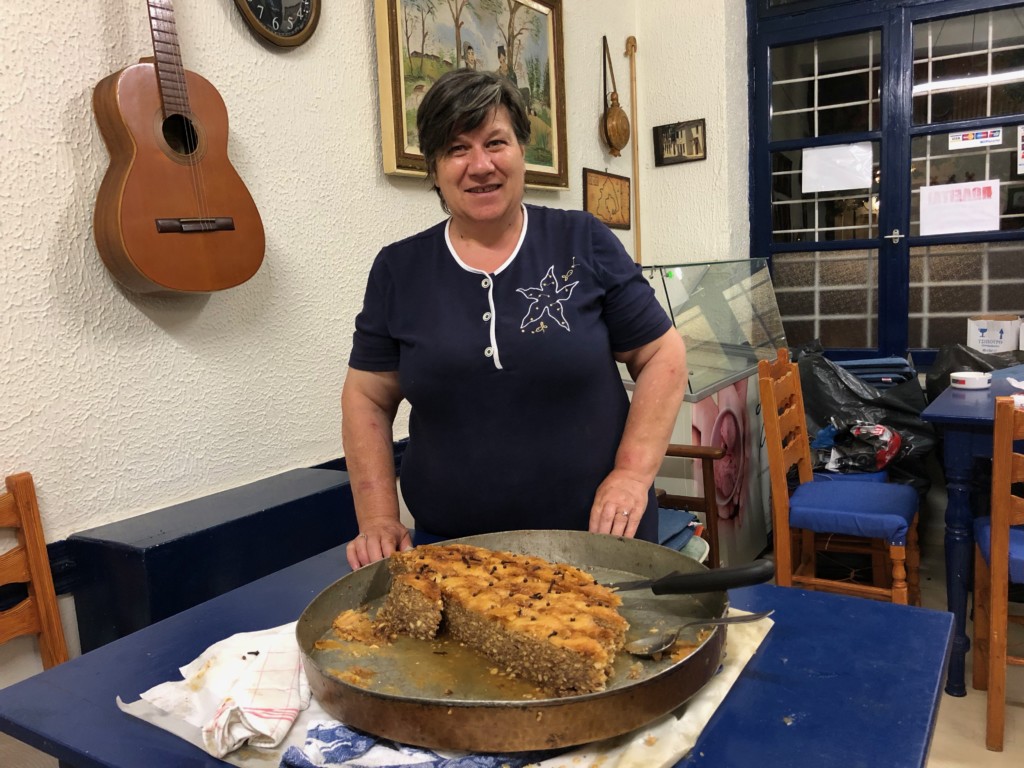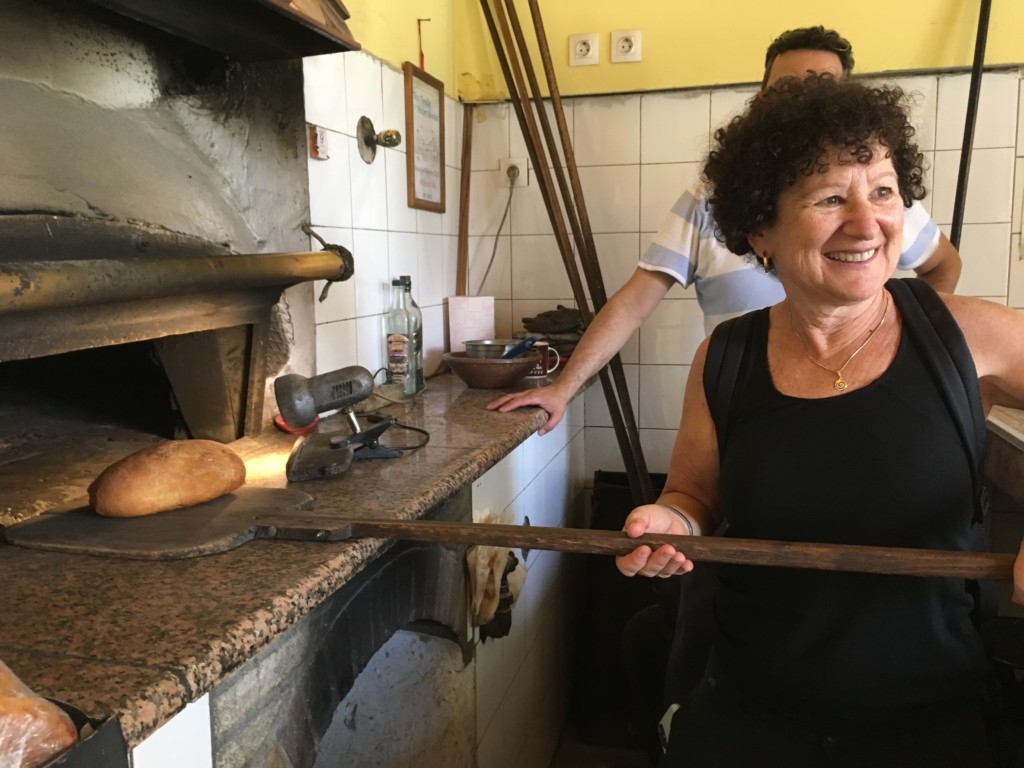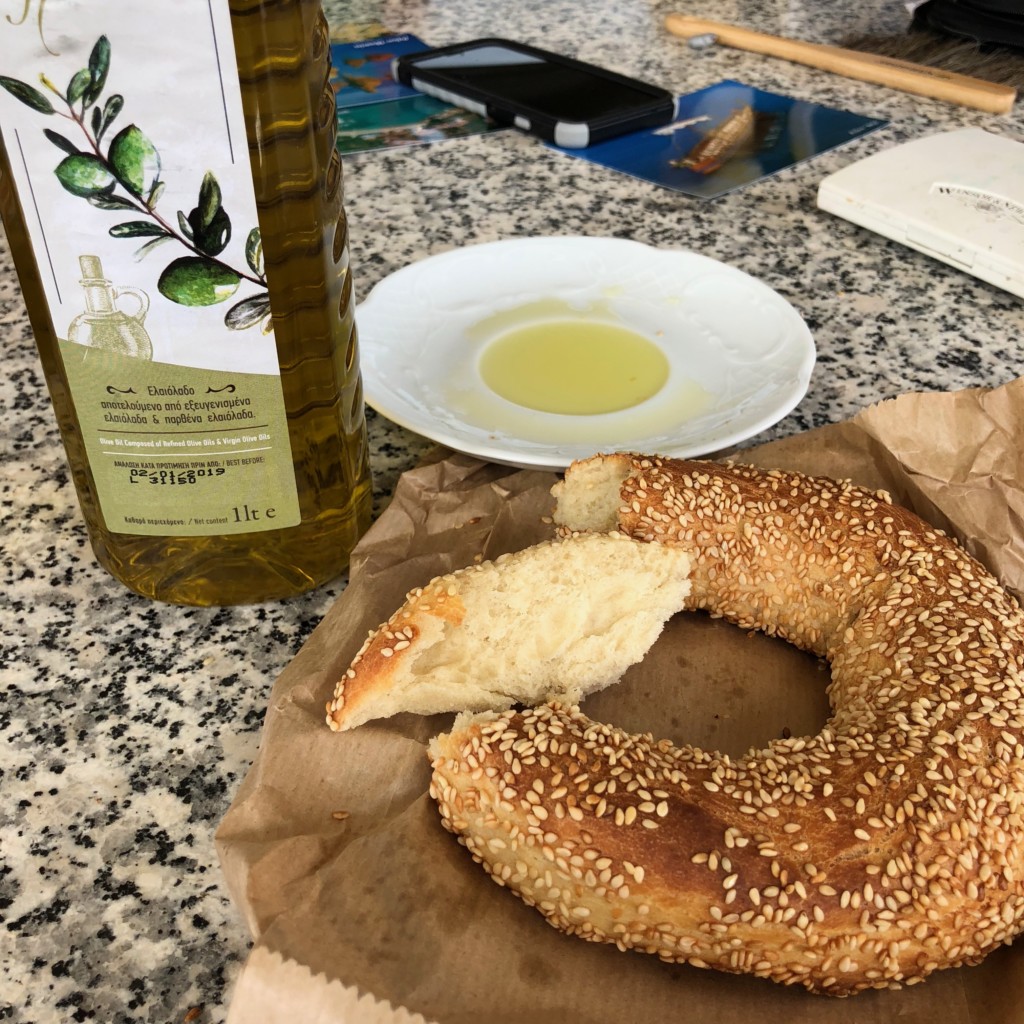Botanical Art Workshop Retreat on the Pelion Peninsula in Greece, June 2018
Lafkos is an old village dating back to the 15th century. There is exceptional plant diversity in this region that rivals anywhere else in the world, which makes it a paradise for botanical artists. We drew, ate, walked, collected plants, swam, ate some more, and visited local ancient ruins and history at every turn.
I recently took a group of students to Lafkos, Greece for a week-long botanical art workshop. This was my first time in this particular region of Greece and the first workshop I have held in Greece. I have taught in many beautiful locations, but this location offered a unique experience I’d never had. We drew, ate, walked, collected plants, swam, ate some more, and visited local ancient ruins and history at every turn. The locals were friendly and welcomed us to their lovely village, telling us about their history and culture.
Our stay in the Pelion Peninsula was in a small village perched high on a hill between the Aegean Sea and the Pagasitikos Gulf. The views of the small islands and mountains were breathtaking, and the sunsets were magical. Lafkos is an old village dating back to the 15th century. There are no cars in the village, but there are charming, narrow stone streets and paths for walking everywhere. Lafkos is 4 or 5 hours from Athens, making it a difficult place to get to, but once you arrive you may never want to leave. And you don’t have to. Traveling around the peninsula can easily fill days and weeks, exploring the ancient history, old neolithic ruins, beautiful calm beaches, and delightful restaurants right by the sea. This part of Greece is like dropping back into a simpler time before cars. Traditional ways of baking, cooking, and foraging for wild greens are very much a part of their culture, dating back to the beginnings of western civilization. Everyone that came on my trip was blown away by the magic and untouched quality and friendly people here.
Workshop Description
For seven days we worked on various plants growing. There were many demonstrations in techniques of combining colored pencil and watercolor, and we focused on different aspects of botanical illustration techniques. Some students did outdoor sketching when we went on excursions to the beach or small villages. We walked on the ancient kalderimia paths collecting plants to draw. Nighttime included dinner either on the terrace always with spectacular sunsets or at a nearby taverna. After dinner we often walked to the village to see the activity around the square.
The Plants
The oldest known botanical painting is a fresco dating back to from the island of Santorini, Greece. Botany was invented by Aristotle, and the Greek physician Diosorides described an extensive listing of medicinal herbs dating back to 70 A.D. which was copied and used over and over for centuries. The Flora Grecia documented plants from the 1700s in Greece, and today they still grow there. There is exceptional plant diversity in this region that rivals anywhere else in the world, which makes it a paradise for botanical artists. Steeped in plant tradition, Greece was a magical place to host a botanical drawing workshop.
Some of the Plants that were growing in June:
- Olive trees everywhere
- figs
- pomegranate
- apples
- plums
- chestnut
- trumpet vine
- oranges, citrus
- pears
- almonds
- black walnut
- blackberries
- weeds
- lambs quarter, amaranth, nettle, rose, Queen Anne’s lace, mallow, purple dead nettle, chicory, capers,
- herbs: oregano, lavender, mint, wild onions, purslane, wild fennel, wild asparagus,
- Fall: mushrooms, ripe figs, olives, pomegranates
Flowers: vary each season
- Oleander
- hibiscus
- trumpet vine
- magnolia grandiflora
- lots of yellow bean flowers of various shrubs and trees
- 57 rare wild orchids in April
- cyclamen (has a season)
- campanula
- morning glories several varieties
- daisies
- hydrangeas in many colors
- passion flowers
About the Hotel
I worked closely almost entirely through email with the owner of the hotel preparing the workshop. Sue Wake is British and has a background in organizing conferences. When I was first contacted by Sue, the description of the region seemed wonderful, as did the accommodations and small town of Lafkos where the Lagou Raxi Country Hotel was located. Sue and her French partner Christian realized their dream of having a small hotel to offer a wonderful experience for the traveler to this area of Greece. The hotel took 10 years to build in the traditional style of the ancient villages and has been open for 5 years. We had a wonderful stay there, and the hotel felt like our home away from home. http://www.lagouraxi.com
Excursion to Athens and Delphi
Sue and a Stamatis our Greek travel agent prepared a two day pre-trip for those who wanted it. The pre-trip started in Athens with a tour of the Acropolis and the brand new museum of the Acropolis. The Acropolis was walking distance from our hotel and we had a local guide that navigated us through the crowds that swarmed there daily. Our guide knew how to read a group, give out interesting and important information, and most important keep us moving through the labyrinth of one of the oldest and most important historical places in the world of western civilization. After the tour of the Acropolis we strolled down a tree-lined walking mall; musicians playing Greek music led us to the newly-opened Acropolis Museum. The museum is fantastic and has a wall of huge windows facing the Acropolis. Underneath it’s glass floor you can see the ancient ruins below.
From there we were driven to Delphi, two hours away. We checked into our hotel and had an exceptional dinner perched high on a mountain overlooking the Gulf of Corinth and the region of Delphi. We had delicious, authentic Greek food and many of us had their first taste of the local liquor called Tspiriouo (A kind of Ouzo made only in this region).
The next morning we toured the otherworldly Delphi, with a guide telling us the history and myths of this archaeological site, which is the spiritual center of the Ancient Greek world.
It was wonderful having our own personal enthusiastic guide (Stamatis) to share his love and knowledge of his country guiding us throughout the week.
About the Pelion Peninsula
In the afternoon we were driven to the Pelion Peninsula which is 4 hours away from Delphi or Athens. The drive is long, and I have to say that I was quite nervous that the group would be exhausted, hot and cranky when we finally arrived at our hotel. The last hour of the drive was over Pelion Mountain, which is a mountain that forms the whole peninsula. At its peak, it is 5500 ft, and at its widest, about 15 miles. On one side is the Aegean Sea with views of close and distant islands, and the other side is surrounded by the Pagasetic Gulf. This is also a great area for rock climbing and believe it or not they even have skiing in the winter!
The water surrounding the peninsula glistened in shades of turquoise and bright blue, mirroring the shutters and doors of many of the ancient fishing villages that line the coasts. Sometimes there are rocky cliffs, and sometimes there are sandy or small rocky beaches, but the water is calm and clear everywhere, perfect for swimming.
The Pelion Peninsula of Greece combines the ambiance of a Greek island with the cultural and historical context of mainland Greece. It is similar to the rest of Greece except for one thing: virtually no tourists! We experienced Greece as if we were visiting friends, without the tourists and tourist-only shops that often dilute the excitement of visiting a new place. The Greek people were cautious at first, and they didn’t engage as we walked by, but as soon as we said, “Yassus,” their faces lit up and they become very friendly. We observed the locals as a proud people who love their country and culture. The population of Greece is about 11 million, and more than half of the people live in the Athens area, which means the Pelion is not at all crowded. The food is very fresh, varied with delicious recipes and delights. Luckily the Greeks believe in lots of small plates, and everyone shares everything. The meal always ends with fresh fruit, and I couldn’t resist the baklava!
The history is amazing. Many Greek myths originated here, as this was the summer home of the gods! We went one day to a cave hardly marked that was home of Chiron the Centaur, brother of Zeus and the wisest centaur who knew about herbs and medicine. Chiron is said to have had famous pupils including Hercules, Jason, and Ajax.
Walking, Hiking, Foraging and Baking
There are a series of walking paths here called kalderimia. One day we hiked for about 8 miles along goat paths, rivers and hills with the fragrance of mint, lavender, oregano and jasmine. The trees were olive, chestnut, apple, pomegranate, fig, etc. It is fun to see it all and the wild blackberries were just starting to ripen. There are literally wild meadows covered in nettle, amaranth, purslane to name a few. I often saw older women dressed in black picking herbs along the hills and roads daily. And I must mention that the paths are full of rocks, many are marble–marble is everywhere! http://www.friendsofthekalderimi.org/thekalderimiand1.html
I met with a local woman who specializes in herbs for food and healing. She has a little shop in town where they sell dried herbs, natural beauty products and other things. She offers walks and workshops in foraging and preparation of natural herb products.
She does tours with the help of her daughter as her English translator. There are many, many people here who are involved with wild plants and foraging. I have seen the old women all dressed in black walking down a path carrying their horta weeds (Amaranth). I have eaten horta almost daily along with all the other amazing local foods.
I visited the bakery in the town nearby, which has one of the only seven remaining wood fired ovens of its kind in Greece. The baker spoke English and was proud to share the traditions that they have been creating there for generations. The bread was the best I have ever eaten, especially when dipped in my trusty bottle of local olive oil. The breads are crusted in sesame seeds, and one bread can only be described as a “bagel loaf.” Crunchy and flavorful.
The restaurant serving the best baklava in town was a few doors down from the bakery. Early in the morning the women were inside baking these huge round copper pans of baklava. I peeked in the window and they motioned me inside. I watched as they made the baklava, and we communicated, though they did not speak a word of English. I ate their baklava on many nights, and they were always excited to serve it to me.
Looking Ahead
One morning I saw a group of children walking towards school. A young boy was lagging behind and he was just staring down at the stone path. As I approached him I could see what he was looking at. It was an army of ants marching along. He excitedly spoke to me in Greek explaining what he was seeing. I stood there with him, understanding every word, though I did not speak Greek. I had these kinds of experiences everywhere I went, because we were not in a touristy environment. These were authentic people, and this is how they live. We were visitors, enjoying their culture, and they were proud to share it with us. There was rarely an exchange of money, there was just a joy in sharing their world. And if we were dining at a restaurant, so were the locals– there were no designated tourist spots.
Picking up figs that had fallen on the ground, an old woman stopped me one day, explaining in Greek that these figs were not ripe and ready to eat. She literally climbed on a truck, grabbed my umbrella and hooked a fig to show me inside and explain that this was not the time for eating. I know now that the figs, pomegranates, grapes, and olives ripen in the fall.
I am planning to go back in the fall for the harvest, and of course to draw the bounty!
Perhaps you will come with me!
Check out the photos below to see some of the students’ work!
